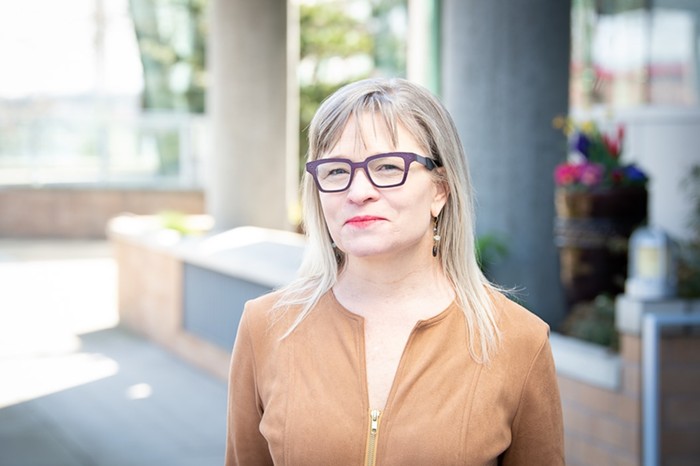ANDY PAIKO AND ETHAN ROSE's Transference, currently on display at the Museum of Contemporary Craft, is not an easy one to describe. Imagine the old stage act in which a man stands before a bunch of half-full wine glasses (a glass harp) and runs his finger around the rims to make music. Now remove the man. Remove the water. Remove the hand from the edge of the glass and replace it with a scrap of wet rag, held to the outside edge, like a needle to a record. Spread 37 of these glasses, in varying sizes, on the walls, most jutting out so that their open plane is perpendicular to the floor. They will be made to spin, the "needle" moving on and off the glass at irregular intervals, by a motor encased inside a box behind the wall (to keep its sound from escaping). Without a finger, the glasses still sing.
What blossomed from a highly involved collaboration, the first between glass artist Paiko and sound artist Rose, is as much an audio exhibit as a visual one. The deep, vibrating tones on display are similar to the wineglass sound or a Buddhist singing bowl, but smoother. In this automated setup, sounds build slowly, evenly, in overlapping non-patterns. "Some of the bowls take longer to speak, so [the computer programs controlling the spinning motors] exert some control in that, but the order is random," says Rose.
Through contrasts of transparency and obscurity, antiquated and modern technology, and performance and recording, Transference plays with the audience. Standing in the gallery, the sounds seem to be coming from all around. Because of the speed at which glass resonates, the human ear has a hard time locating its hums. Furthermore, when ricocheting particles escape the glass as sound, they travel laterally, like ripples on a pond. (The richest tones are actually heard in the corners of the room, where the atoms collide.) The result is a scavenger hunt in full view.
In Transference, Paiko and Rose juxtapose mechanisms that were supposed to miss each other by more than 100 years—the antiquated glass harp is operated like a record player and timed by a computer. Anachronism is as face-front as a horse and buggy trotting down a highway. Instead of the glasses being centralized and filled with water for the harpist, they are scattered around the room and turned sideways to enhance the sound. This is only possible because the performer is absent from the performance—a recurring theme for Rose. At his recent Time-Based Art show, he curled back random tines from music boxes and filled a room with these gap-toothed players, creating a spur-of-the-moment track by a conductor asleep at the wheel. To defer agency in Transference, Paiko and Rose did not design the pitch of the glasses, but tuned them post-production, letting the material dictate.
Once again, the Museum of Contemporary Craft gets its jollies by toeing the line between "craft art" and "modern art." To use a glass (held sideways) to expel something (notes) rather than hold something, to use glass as an instrument, to automate the "playing" and remove the hand, and surrender the performance to random elements—these are all ways in which Paiko and Rose invert craft norms. But looking at the pieces on display—unique, detailed, and delicate—there's no question that they belong here.













